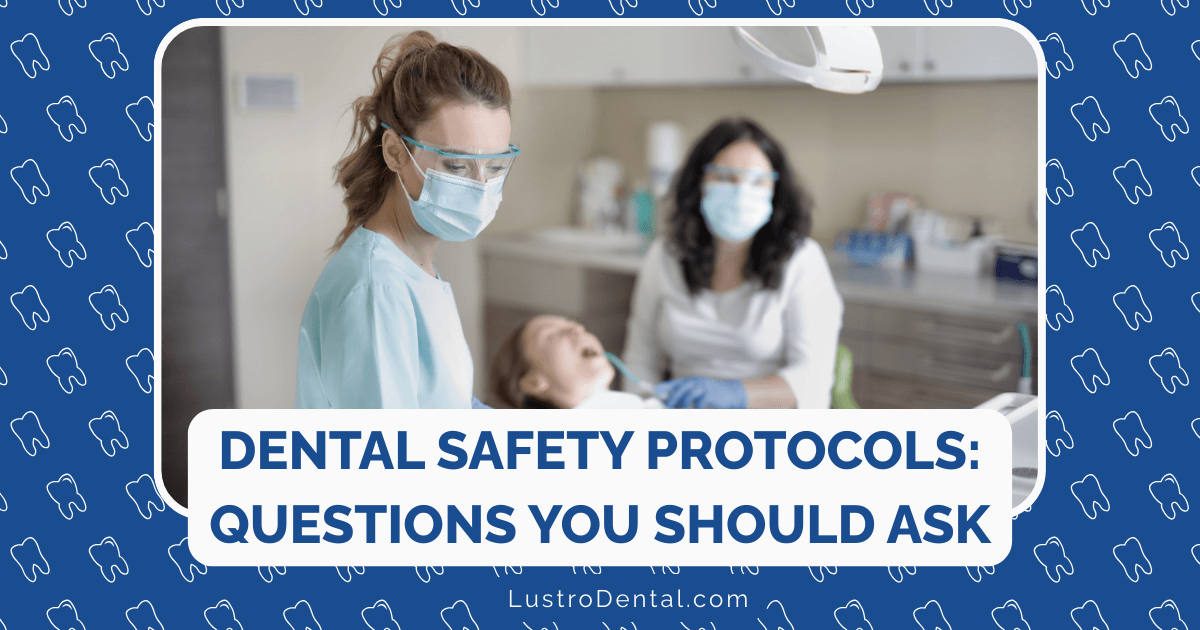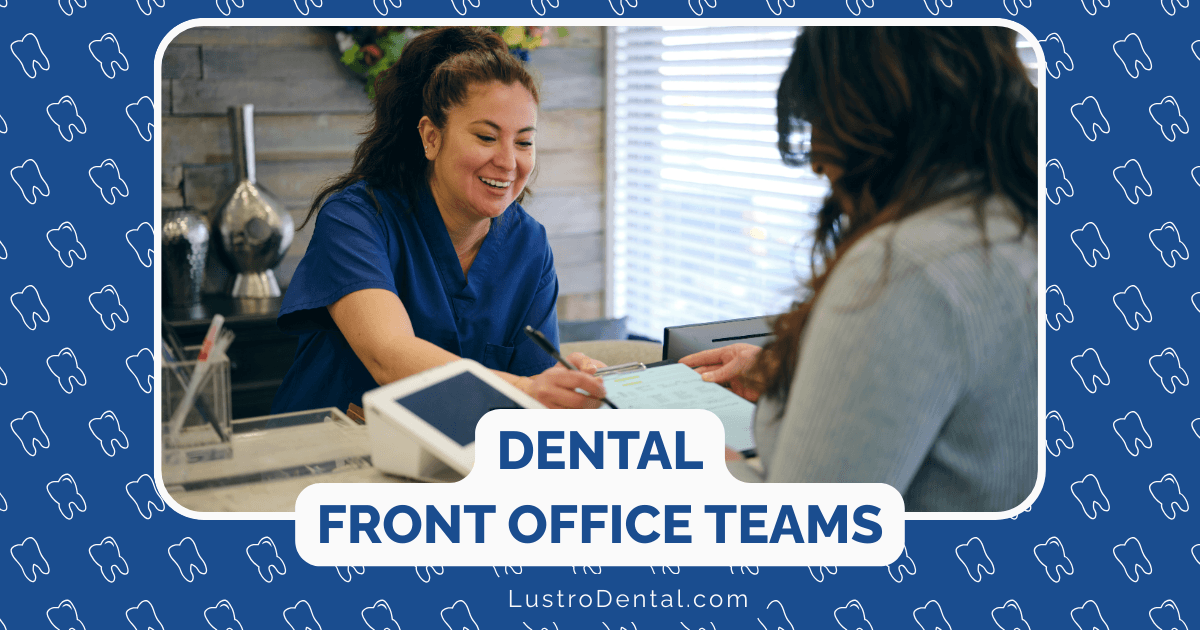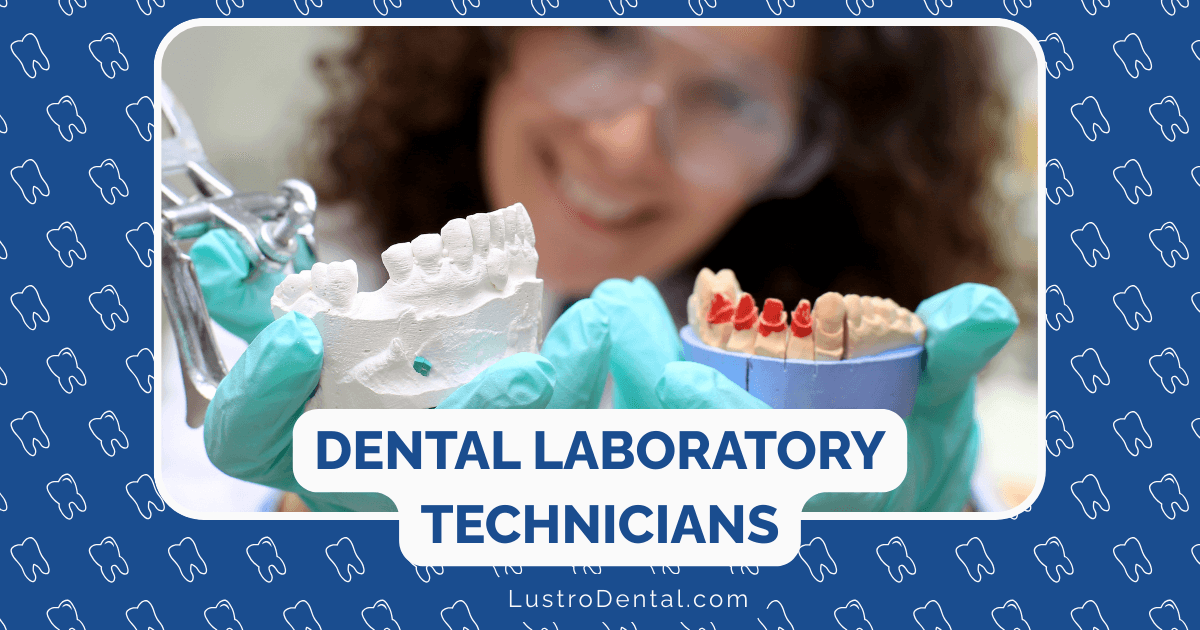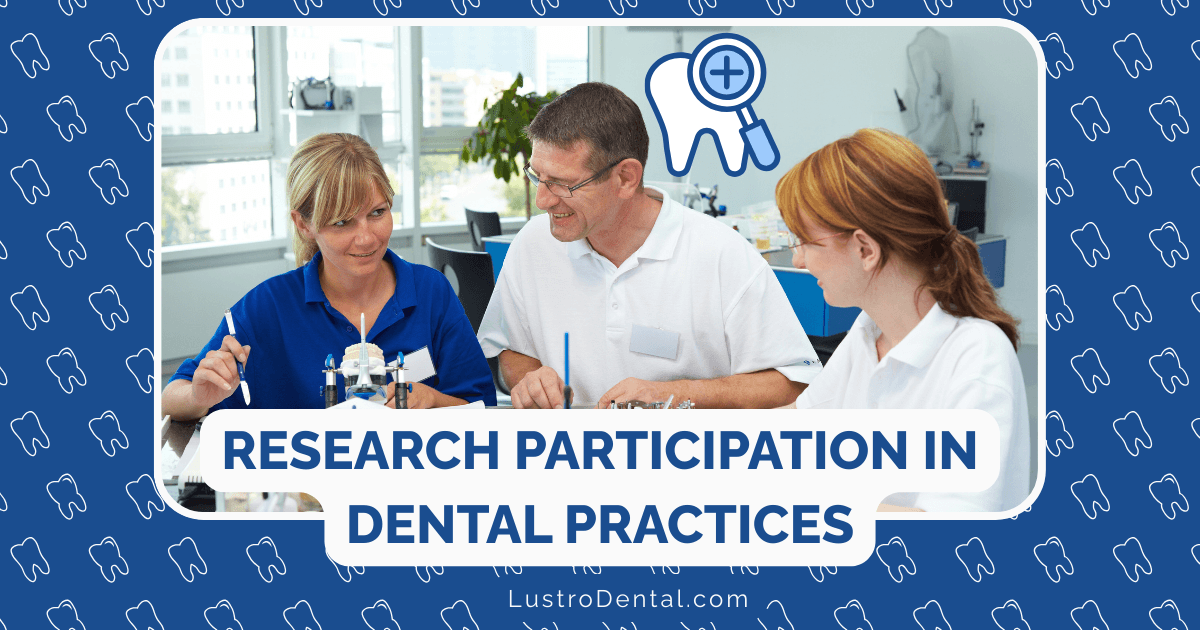Patient Safety Measures: Questions to Ask About Your Dental Office’s Protocols

When you settle into the dental chair, your thoughts likely focus on the procedure ahead—perhaps a routine cleaning, a filling, or a more complex treatment. What may not cross your mind are the extensive safety protocols working behind the scenes to protect your health. Yet these invisible systems form the foundation of safe dental care and deserve your attention.
As a dental patient, you have both the right and responsibility to understand the safety measures in place at your dental office. This knowledge not only provides peace of mind but empowers you to make informed decisions about your oral healthcare providers.
In this comprehensive guide, we’ll explore the essential questions to ask your dental office about their safety protocols, why these measures matter, and how to evaluate the answers you receive.
Why Asking About Safety Protocols Matters
Before diving into specific questions, let’s understand why this conversation is so important:
- Infection Risk in Dental Settings: Dental procedures often involve exposure to blood, saliva, and aerosols, creating potential pathways for disease transmission if proper protocols aren’t followed.
- Variability Between Practices: While regulatory bodies provide guidelines, implementation can vary significantly between dental offices.
- Evolving Standards: Best practices in infection control continue to evolve, particularly in the wake of the COVID-19 pandemic and emerging research.
- Personal Health Considerations: Your individual health circumstances may necessitate additional precautions during dental treatment.
According to the Centers for Disease Control and Prevention (CDC), “Patients have the right to expect safe care in the dental setting.” By asking informed questions, you help ensure this expectation is met.
Key Questions About Instrument Sterilization
Instrument sterilization represents one of the most critical aspects of dental safety. These questions will help you understand how your dental office handles this essential process:
1. “How do you ensure dental instruments are properly sterilized between patients?”
A thorough answer should include:
- Description of a multi-step process (cleaning, packaging, sterilization)
- Mention of heat sterilization (autoclaving) for critical and semi-critical instruments
- Reference to following manufacturer instructions for specific instruments
Red flags include vague responses or exclusive reliance on chemical disinfectants without heat sterilization for critical instruments.
2. “How do you monitor your sterilization equipment to ensure it’s working properly?”
Look for an answer that includes:
- Biological monitoring (spore testing) at least weekly
- Chemical indicators used with every instrument package
- Mechanical monitoring of time, temperature, and pressure
- Documentation systems for tracking results
According to the American Dental Association (ADA), “Sterilization monitoring is an essential component of any in-office infection control program.” A dental office should readily explain their monitoring protocols.
3. “What happens if your sterilizer fails a monitoring test?”
The correct response should include:
- Immediately taking the sterilizer out of service
- Recalling instruments processed since the last successful test
- Investigating the cause of failure
- Implementing corrective actions before resuming use
This question reveals whether the practice has established protocols for handling sterilization failures—a key indicator of a comprehensive safety program.
Questions About Personal Protective Equipment (PPE)
The protective gear worn by your dental team provides crucial barriers against disease transmission. These questions help you understand their PPE protocols:
4. “What types of personal protective equipment do your staff members use during different procedures?”
A comprehensive answer should mention:
- Gloves: Changed between patients and when compromised
- Masks: Appropriate to the procedure (surgical masks or N95 respirators)
- Eye protection: Glasses with side shields or face shields
- Protective clothing: Gowns or lab coats changed when visibly soiled
The CDC emphasizes that PPE selection should be based on the anticipated exposure, and different procedures may require different levels of protection.
5. “How has your PPE protocol changed since the COVID-19 pandemic?”
Look for specific adaptations such as:
- Enhanced respiratory protection (N95 respirators for aerosol-generating procedures)
- Additional barriers (face shields over masks)
- More frequent changing of protective gear
- Improved donning and doffing procedures to prevent self-contamination
This question reveals whether the practice stays current with evolving safety recommendations and adapts to new challenges.
Questions About Environmental Infection Control
The cleanliness of the treatment room and dental equipment significantly impacts patient safety. These questions address these environmental factors:
6. “What is your protocol for cleaning and disinfecting the treatment room between patients?”
A thorough response should include:
- Disposal of single-use items
- Cleaning and disinfection of all surfaces potentially contaminated during treatment
- Use of EPA-registered hospital-grade disinfectants
- Sufficient contact time for disinfectants to work effectively
- Special attention to frequently touched surfaces
According to infection control experts at the Organization for Safety, Asepsis and Prevention (OSAP), proper environmental cleaning is essential for breaking the chain of infection in dental settings.
7. “How do you ensure the quality and safety of water used during dental procedures?”
Look for answers that address:
- Regular monitoring of dental unit waterlines
- Treatment protocols to prevent biofilm formation
- Testing to verify water meets or exceeds EPA drinking water standards (≤500 CFU/mL)
- Use of sterile water or saline for surgical procedures
Dental unit waterlines can harbor bacteria if not properly maintained, making water quality management an important safety consideration.
8. “What air quality measures do you have in place to reduce aerosols during procedures?”
A comprehensive response might include:
- High-volume evacuation (HVE) during aerosol-generating procedures
- HEPA air filtration systems
- Adequate ventilation and air exchange rates
- Use of dental dams to reduce contamination
- Sequenced scheduling to allow aerosols to settle between patients
These measures became particularly important during the COVID-19 pandemic but remain relevant for reducing all types of airborne contaminants.
Questions About Staff Training and Safety Culture
Even the best equipment and protocols are only effective when consistently implemented by well-trained staff. These questions help you assess the human element of safety:
9. “Do you have a designated infection control coordinator, and what are their qualifications?”
Look for:
- A specific staff member assigned to oversee infection control
- Formal training or certification in dental infection control
- Regular updates to their knowledge through continuing education
- Responsibility for monitoring compliance with protocols
The CDC recommends that every dental practice assign at least one person as an infection prevention coordinator responsible for developing written infection prevention policies and providing staff training.
10. “How do you ensure all team members stay current with infection control best practices?”
A good answer should include:
- Regular staff training on infection control protocols
- Documentation of training completion
- Updates when guidelines change
- Competency assessments for critical safety procedures
- Access to continuing education resources
This question helps you understand whether safety is treated as a one-time training or an ongoing commitment.
Questions About Emergency Preparedness
Dental emergencies can occur unexpectedly, making preparedness an important aspect of patient safety:
11. “What emergency protocols do you have in place for medical emergencies in the office?”
Look for responses that include:
- Regular staff training in basic life support (BLS) or CPR
- Emergency medical kit readily available
- Written emergency response protocols
- Regular emergency drills
- Clear roles and responsibilities during emergencies
This question helps assess whether the practice is prepared to handle unexpected medical situations that might arise during your treatment.
12. “What is your protocol if a staff member or patient is diagnosed with a communicable disease after being in the office?”
A thorough answer should address:
- Contact tracing procedures
- Communication protocols for potentially exposed individuals
- Collaboration with local health departments
- Enhanced cleaning and disinfection measures
- Documentation of the incident and response
This question reveals whether the practice has thought through their response to potential exposure incidents.
Questions About Compliance and Oversight
External oversight helps ensure dental practices maintain appropriate safety standards:
13. “How does your office stay compliant with CDC, OSHA, and state dental board regulations?”
Look for answers that demonstrate:
- Awareness of current regulatory requirements
- Regular self-assessments or audits
- Documentation systems for required records
- Proactive updates when regulations change
- Willingness to share inspection results if applicable
According to Compliancy Group, “Maintaining accurate records serves as proof of compliance and helps identify potential issues.” A practice committed to safety should have robust compliance systems.
14. “Would you be willing to show me your sterilization area and explain your processes?”
While not all practices can accommodate an impromptu tour, willingness to transparently share their processes—either during a scheduled visit or through educational materials—demonstrates confidence in their protocols.
A practice with strong safety measures will typically be proud to share their infection control systems with patients.
How to Evaluate the Responses You Receive
Asking these questions is only valuable if you can assess the quality of the answers. Here are some guidelines for evaluation:
Signs of Strong Safety Culture:
- Specific, detailed responses rather than generalizations
- Referencing established guidelines from CDC, ADA, OSAP, or other authorities
- Willingness to explain technical aspects in patient-friendly terms
- Documentation of protocols and monitoring results
- Continuous improvement mindset, acknowledging that safety systems evolve
- Consistency across different team members’ responses
- Comfort with questions rather than defensiveness
Potential Red Flags:
- Vague or dismissive responses that lack specificity
- Outdated practices that don’t align with current recommendations
- Reluctance to discuss safety protocols
- Inconsistent answers from different team members
- Absence of documentation for critical safety processes
- Defensive reactions to reasonable questions
Remember that no dental practice is perfect, and honest acknowledgment of challenges alongside clear improvement strategies can actually indicate a healthy safety culture.
Special Considerations for High-Risk Patients
If you have specific health conditions that may increase your vulnerability to infections, additional precautions may be warranted:
15. “What additional precautions do you recommend for patients with compromised immune systems or other high-risk conditions?”
Appropriate responses might include:
- Scheduling at specific times (first appointment of the day)
- Enhanced PPE for certain procedures
- Antibiotic prophylaxis when indicated
- Additional barriers or isolation measures
- Coordination with your physician when appropriate
Dr. Emily Landon, hospital epidemiologist at the University of Chicago Medicine, notes: “High-risk patients should be particularly proactive in understanding their dental office’s infection control measures, as standard precautions may need to be enhanced for their specific situation.”
Communicating Effectively About Safety Concerns
How you approach these questions can significantly impact the quality of responses you receive:
Tips for Productive Safety Discussions:
- Frame questions as information-seeking rather than accusatory
- Acknowledge the expertise of dental professionals
- Express that safety is a shared goal for both you and the practice
- Consider timing your questions during a consultation rather than during treatment
- Prepare written questions in advance if you’re concerned about remembering them
- Follow up on unclear answers with specific requests for clarification
Most dental professionals are committed to patient safety and will appreciate your engagement in this important aspect of care.
Beyond Questions: Other Ways to Assess Dental Office Safety
While direct questions provide valuable insights, you can also gather information through observation:
Visual Cues of Strong Safety Practices:
- Staff consistently wearing appropriate PPE
- Visible hand hygiene between patients and procedures
- Clean, uncluttered treatment areas
- Instruments delivered in sealed packages that are opened in your presence
- Surface barriers changed between patients
- Visible documentation systems (e.g., sterilization monitoring logs)
- Certifications and continuing education credentials displayed
External Verification Sources:
- State dental board websites for license verification and disciplinary actions
- Online reviews specifically mentioning safety practices
- Accreditation by voluntary dental practice accreditation programs
- Membership in professional organizations focused on infection control
Conclusion: Partnership in Safety
Dental safety is ultimately a partnership between providers and patients. By asking informed questions about your dental office’s protocols, you become an active participant in ensuring safe care.
Dr. Kathy Eklund, Director of Infection Control at The Forsyth Institute, emphasizes: “Patients who ask questions about infection control actually help dental practices maintain their focus on these critical safety measures. It’s a positive interaction that benefits everyone.”
Remember that the goal of these questions isn’t to challenge your dental provider’s expertise but to establish a shared understanding of the measures in place to protect your health. Most dental professionals will welcome your interest and provide reassurance about their commitment to safety.
In an era of increasing transparency in healthcare, dental practices with robust safety protocols should be prepared to discuss them openly with patients. Those that do demonstrate not just technical competence but a patient-centered approach to care that values your right to understand how your health is protected during dental treatment.







